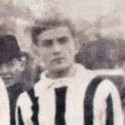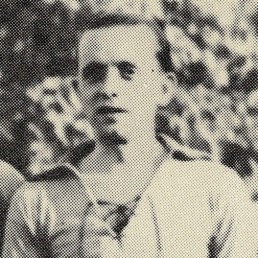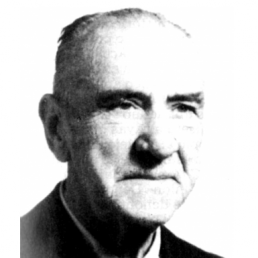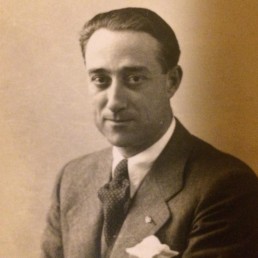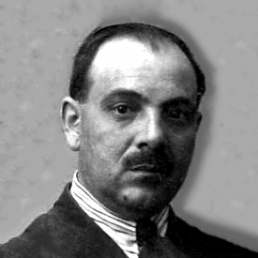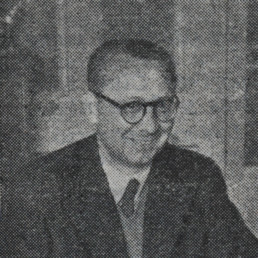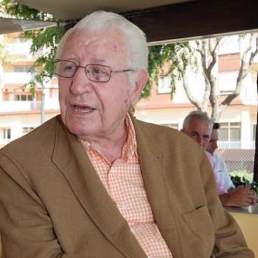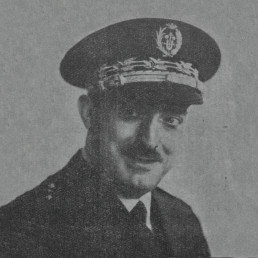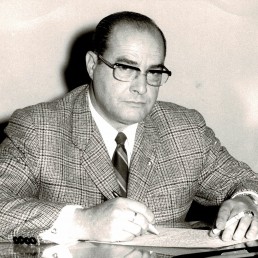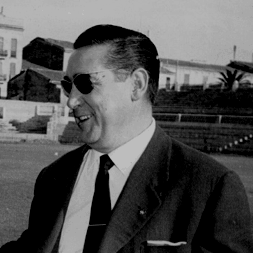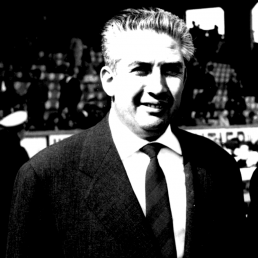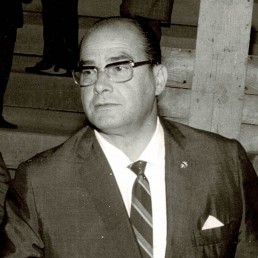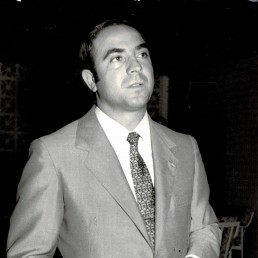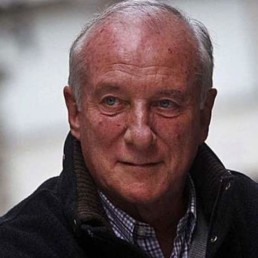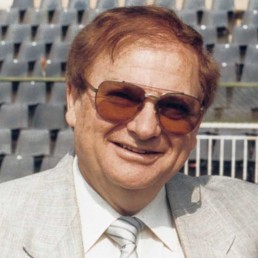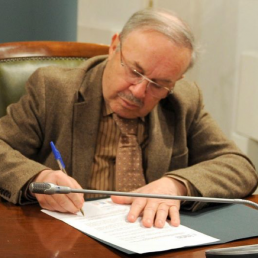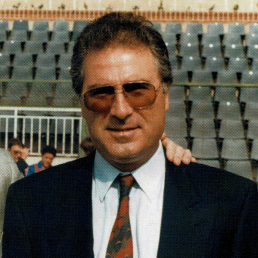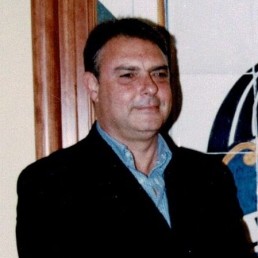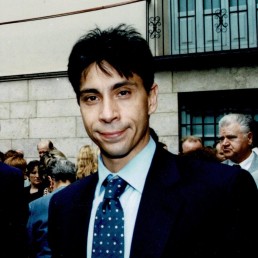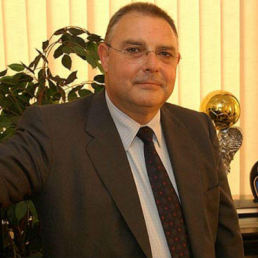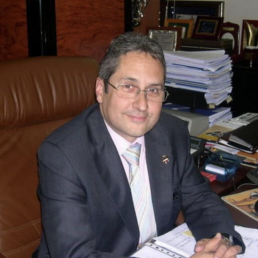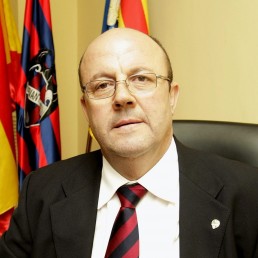Chairmen
Levante F.C.
José Ballester was the first president of Levante F.C. His name appears in the press release published by El Pueblo on 7 September 1909. Ballester heads the Board of Directors that marks the beginning of the society linked to Poblados Marítimos, son of the pedagogue Vicente Ballester Fandos, the Ballester family is fundamental in the regulation of the original Levante F.C.
Gimnástico F.C.
Amador Sanchís became the first president of the Gimnástico F.C. It was in 1909. Sanchís was associated at that time with Father Narciso Basté, director of the Obra Social del Patronato de la Juventud Obrera. He was a footballer, referee, manager and also a journalist in Diario de Valencia. From this newspaper, and under the pseudonym of Seg, he made up the discourse of the dean of the city. After the merger, he was president of Levante U.D.
Chairpersons after the merger
Here you have the record of the presidents of Levante U.D. from 1939 to the present day, taking as initial reference the merger of Levante F.C. and Gimnástico F.C.
Luis Moscardó
He took over the presidency in December 1941 and in August 1943 he remained at the head of the new board. He took over a club with serious financial shortcomings, which was competing in the Second Division. He devised the creation of a financial fund made up of individual contributions in order to guarantee the club's viability.
Isaías Aspas
Isaías Aspas (16-02-1883/30-10-1959) in November 1944, in the Diario Deportes, gives clues about his mandate. He became president at the beginning of the 1944-1945 academic year. He presided over Gimnástico in the 1930s. He recovered relevant players such as Botella, Nieto or Martínez Catalá to face the year with guarantees. He pursued promotion to the Second Division, which was achieved a year later.
Francisco Belenguer
Francisco Belenguer (07-04-1904/26-05-1956), in September 1945, was writing in the press about his plans after becoming president. Despite the economic hardships, he was able to put together a team, with Villagrá as coach, which managed to return to the Silver Division in the 1945-1946 season. His greatest achievement was to secure the club's place in the Second Division. He covered the second half of the 1940s.
Vicente Gil y Morte
In the early months of 1950 his name was linked to the presidency of Levante. It was the 1949-1950 academic year. As head of the club, he signed the termination of the contract that linked the club and the coach Antonio Bonet. A few years earlier, he was present at the birth of U.DL.G. as a lawyer after the merger of Levante F.C. and Gimnástico.
Manuel Alepuz
Manuel Alepuz (07-10-1917/13-08-2008) was a unique case, he defended the Gran Canaria crest as a defender in 1948-1949 and 1949-1950. After closing his professional career he was president and coach of Levante. In August 1950 he validated the players' contracts as leader. He then moved to the Vallejo bench. He directed the National Committee of Technicians of the Valencian Federation.
Amador Sanchis
The figure of Amador Sanchís will always be linked to the birth of Gimnástico in 1909. Alma mater of the dean, he was a lawyer, sports journalist for Diario de Valencia and president of the Valencian Football Federation. Between the months of August and November 1951, it is possible to follow his trail as Levante's top manager.
Antonio Román
Antonio Román (2-12-1912/15-04-1990) became president in 1952. His first action was the acquisition of ownership of the Vallejo Stadium after the lawsuit with the Martínez de Vallejo family. He consolidated the team in the Second Division. He signed Wilkes. In 1959 he presented a project for the construction of a new stadium to replace the Vallejo stadium. Shortly afterwards, he put an end to his first stage.
José Navarro
Commercial agent, he tried to redress the chaotic financial state since his accession in May 1960. He hired Lelé. He took on the issue of the new camp. In February 1962 he signed a contract with Blas Escrig. Levante ceded him the Vallejo plots in exchange for paying off the debt and building a new stadium, in the name of Levante, which was raised on 31 December 1963.
Eduardo Clérigues
A notary by profession, he took over the presidency in June 1962. He projected Levante into the First Division in the 1962-1963 season. The team spent two seasons in the elite. He extended the contract between Levante and Blas Escrig for the construction of the new stadium until 30 June 1965. He left the presidency in 1966.
Antonio Román
He became president in 1966. His second period was marked by the definitive departure of Vallejo and the construction of the Ciutat de València, inaugurated under the name of Estadio Antonio Román in September 1969. Levante had returned to the Third Division at the end of the 1967-1968 season after the restructuring of the Silver Division.
Grau Torralba
He took over in January 1971. That season ended with a duel against Nàstic for relegation to the third division. Grau Torralba tackled the recruitment of Caszely and decided to consolidate the Costa de Valencia Trophy in an attempt to link the club with its environment. He achieved two promotions to the Second Division. The 1976-1977 financial year was his last as president.
Santiago Sanz
Santiago Sanz (24-2-1939/24-07-2020) managed Levante's return to the Silver Division at the end of the 1978-1979 season. He was president between 1977 and 1979. He launched the three-year Pro-Ascenso a Primera promotion with the aim of raising funds to alleviate the complicated economic situation of an indebted and loss-making club. He resigned in November 1979.
Francisco Aznar
He was the president who closed the deal to sign Cruyff in February 1981. The distressing financial situation was suffocating the club. Aznar, who presented his candidacy in November 1979, faced the lockout of the players at the end of the 1980-1981 season with the team in Segunda A. He resigned, he confirmed, on medical advice in June 1981.
Federico Cortés
He was president of Levante between July and October 1981. He announced that he would be linked to an investment group that would guarantee the club's financial and sporting stability. This possibility never materialised. Levante was going down in flames. He closed the signing of Toza as coach, although the Balkan coach did not make his debut in the 1981-1982 season.
Antonio Aragonés
He managed the club in a critical context between 1982 and 1986. Debts caused Levante to lose two categories in the summer of 1982. The sporting relegation from Segunda A was followed by administrative relegation to Tercera. He returned the club to Segunda B during the 75th anniversary year. He defended before the members the birth of a new club; Naranja CF. Between March and April 1985 he requested a leave of absence from the presidency for health reasons.
Juan José Murria
Juan José Murria (12-07-1944/6-05-2020), vice-president in Antonio Aragonés' board, became president in March 1985 due to Aragonés' illness. He was acting president between March and April 1985. It was a very critical period. The future of the current Ciutat was being debated. The threat of an auction hovered over Orriols. As a result of his work, Levante maintained ownership of the Ciutat. He participated in the construction of the Antonio Román Stadium. He planned the conversion of the then Nou Estadi into the Olympic Stadium. The project did not come to fruition.
Ramón Victoria
Ramón Victoria (8-02-1931/2-04-2009) became president in the summer of 1986. He had to rebuild a club that had hit rock bottom after falling to the Third Division. He managed to stabilise the club's ailing economy. He returned Levante to the Silver Division in the 1988-1989 season after projecting the club from the Third Division. In 1994 he left the post. He was Honorary President between 2001 and 2009.
José Luis López
He undertook the definitive transformation of Levante into a public limited company. He strengthened the social base of the institution, notably increasing the attendance at the Ciutat. Under his mandate, Levante won 13 consecutive victories in Group III of Segunda B during the 1994-1995 season. His thorn in their side was the match against Écija.
Abel Guillén
Abel Guillén (14-11-1946/9-02-2011), his mandate during the 1995-1996 academic year can be interpreted as a transitional period. Nevertheless, his presidency was characterised by a good star. Levante returned to the structures of professional football after promotion to Segunda A at the end of the 1995-1996 season with Carlos Simón in the dugout.
Pedro Villarroel
Patron of the club since the eighties and maximum shareholder after the conversion into a SAD, Pedro Villarroel (3-5-1946) became president of Levante in 1996. The team returned to Segunda A. In this first stage as president, he built the Ciudad Deportiva de Buñol and consolidated the team in Second Division A to storm the walls of the First Division.
Antonio Blasco
Antonio Blasco (8-11-1967) was the first professional manager of the entity. He had held different functions in the internal organisation of the company before becoming president. He was president during the 2002-2003 and 2003-2004 seasons. Under his mandate, Levante won the coveted promotion to the First Division forty years later. After the promotion, he left the club.
Pedro Villarroel
He returned to the presidency with Levante's return to the First Division in the 2003-2004 season. Levante failed to maintain the category, although he led the club back to the elite in 2005-2006. Those were days of light and dark. His end was convulsive. He handed over the presidency to Julio Romero in 2006, although he was still the maximum shareholder. In September 2009 he left the club for good.
Julio Romero
Julio Romero (16-10-1958) became president in December 2006 after holding various managerial positions in the club's organisation chart. Romero bought Villarroel's shares in February 2008. In the summer of 2008, Levante's life was hanging by a thin thread after returning to the second division. A debt of 85 million euros and insolvency proceedings were consuming the club.
Jesús Serna
Jesús Serna became Chairman at the General Meeting of Shareholders in December 2008. The new president was linked to businessman José Antonio López Lara. Identified as a mediator in the purchase process, Lara expressed his confidence in the figure of Serna and in the duality of a project that had a sporting and real estate section.
Quico Catalán
Francisco Catalán (1-12-1975) returned to the club in 2009 as General Manager in a context of bankruptcy. He had previously been spokesman for the Board chaired by Villarroel. In 2010 he became president. During this period, Catalán has achieved social, economic and sporting stability for a club that has managed to establish itself in the First Division and project itself into the European League in the 2012-2013 season.
Chairmen of Levante U.D. by periods
| Rafael Valls | 1939-1941 | ||
| Luis Moscardó | 1941-1943 | ||
| Emilio Bello | 1943-1944 (first mandate) | ||
| Isaías Aspas | 1944-1945 | ||
| Francisco Belenguer | 1945-1949 | ||
| Vicente Gil y Morte | 1949-1950 | ||
| Manuel Alepuz | 1950-1951 | ||
| Amador Sanchís | 1951 | ||
| Emilio Bello | 1952 (second mandate) | ||
| Antonio Román | 1952-1959 (first mandate) | ||
| José Navarro | 1960-1962 | ||
| Eduardo Clérigues | 1962-1966 | ||
| Antonio Román | 1966-1970 (second mandate) | ||
| Grau Torralba | 1971-1977 | ||
| Santiago Sanz | 1977-1979 | ||
| Francisco Aznar | 1979-1981 | ||
| Federico Cortés | 1981 | ||
| Antonio Aragonés | 1982-1986 | ||
| Ramón Victoria | 1986-1994 | ||
| José Luis López | 1994-1995 | ||
| Abel Guillen | 1995-1996 | ||
| Pedro Villarroel | 1996-2002 (first mandate) | ||
| Antonio Blasco | 2002-2004 | ||
| Pedro Villarroel | 2004-2006 (second mandate) | ||
| Julio Romero | 2006-2008 | ||
| Jesús Serna | 2009 | ||
| Francisco Catalán | 2010- |
